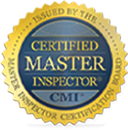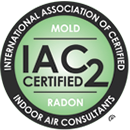Water Treatment Systems: A Homeowner's Guide
Why Start with a Test
If you’re thinking about treating your home’s water, the first step is always a water quality test. Here in Montana, a lot of homes rely on private wells, and what’s in your water can vary a ton—iron, hardness, bacteria, even things like arsenic or nitrates. A simple test tells you exactly what you’re dealing with, so you don’t waste money on the wrong system.
Point-of-Use Systems: Treat It Where You Drink It
These sit right at your sink, fridge, or even on the countertop. Perfect if you just want to improve the quality of drinking or cooking water.
- Carbon Filters (pitchers, faucet, under-sink units)
These take care of chlorine taste, odors, and some chemicals. If your water tastes funky, this is the easiest fix. They’re cheap—$20 for a pitcher, a couple hundred for under-sink units—but you’ll be swapping filters every few months. - Reverse Osmosis (RO)
Think of this as the heavy hitter. RO systems strip out a wide range of stuff—dissolved minerals, metals, nitrates, even PFAS. If your water test shows real concerns, this is a solid choice. Under-sink systems run $200–$600, while whole-home RO can climb into the thousands. The tradeoff: they waste some water and remove beneficial minerals along with the bad. - UV Purifiers
If bacteria or microbes show up in your test, UV light is your friend. It zaps pathogens like E. coli or Giardia. UV units are usually paired with other filters, and bulbs need replacing about once a year.
Point-of-Entry Systems: Treat It for the Whole House
These handle all the water coming into your home—so every faucet, shower, and appliance benefits.
- Sediment Filters
Great for well water that brings in sand, silt, or rust. These are low-cost and extend the life of bigger systems, but you’ll be swapping cartridges often. - Carbon or Catalytic Carbon Filters
Ideal if your water smells or tastes off (think chlorine or sulfur). Catalytic versions handle chloramines too. Costs are moderate and maintenance depends on the media type. - KDF Filters (copper-zinc)
These help with bacteria control and improve taste. Usually installed as part of a multi-stage system. - Water Softeners
If you’ve got hard water—and many parts of Montana do—you already know the signs: scale buildup on faucets, dry skin, soap that doesn’t lather. A softener solves it. Expect $1,000–$3,000 for a whole-house unit plus regular refills of salt or resin. - Multi-Stage Systems
For homes with several water issues at once, a combo system makes sense. You might see setups that include sediment pre-filters, a softener, carbon, UV, and even RO. They’re customizable but can run from a thousand dollars up to $5,000 or more.
A Few Montana-Specific Notes
- Well water varies a lot — iron, hardness, nitrates, and bacteria are common.
- Efficiency matters — RO systems waste some water, so it’s worth weighing that in areas where supply is limited.
- Maintenance is key — even the best system only works if you replace filters, bulbs, or resin on schedule.
- Local installers — companies like Culligan and other Montana-based outfits can test and tailor solutions for your area.
Wrapping It Up
There’s no one-size-fits-all solution, but there is a system that matches your home’s needs. Start with a test, figure out what your water really needs, and then build from there. For some Montana families, that’s just a simple carbon filter under the sink. For others, it’s a whole-house softener with UV backup.
Safe, great-tasting water is one of those “quality of life” upgrades you’ll appreciate every single day.








